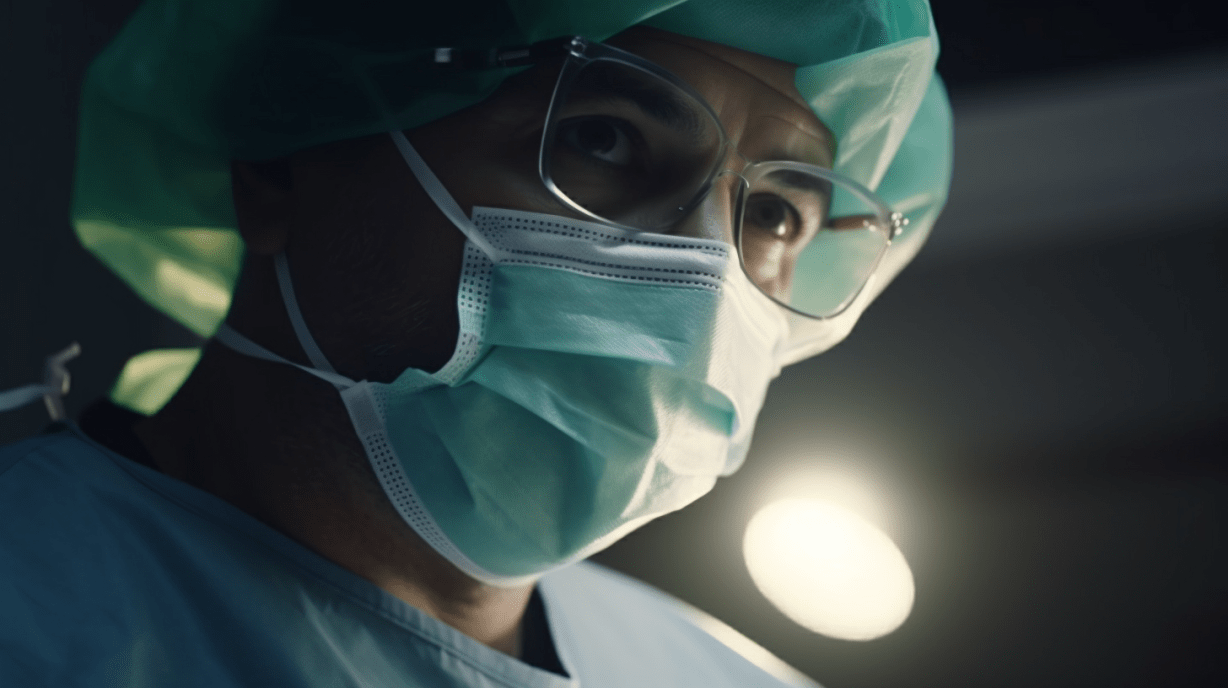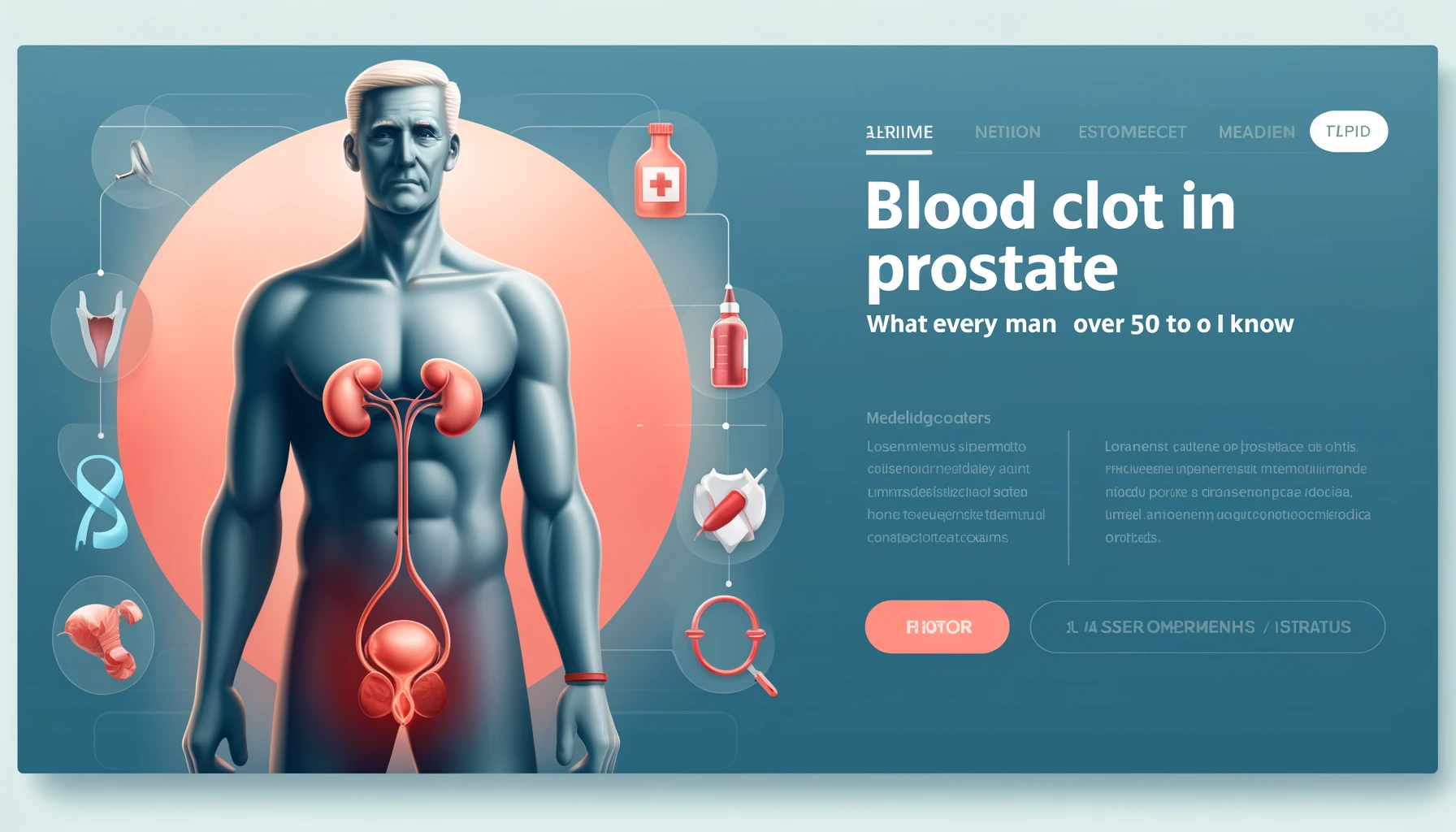Contents
- 1 1. Introduction – Prostate surgery
- 2 2. Types of Prostate Surgery
- 3 3. Conditions Treated with Prostate Surgery
- 4 4. Prostatectomy Procedure
- 5 5. TURP Procedure
- 6 6. Radical Prostatectomy Procedure
- 7 7. Laparoscopic Radical Prostatectomy Procedure
- 8 8. Prostate Laser Surgery Procedure
- 9 9. Risks and Complications
- 10 10. Conclusion – Prostate surgery
- 11 11.FAQs – Prostate surgery
- 12 Reference
- 13 Men's Health Related Articles
1. Introduction – Prostate surgery
Prostate surgery is a standard procedure used to treat various conditions affecting the prostate gland, which is situated in the male pelvis, below the urinary bladder, and surrounds the urethra[1]. This article will discuss the different types of prostate surgeries, the conditions they treat, and what to expect during the procedures and recovery process.
2. Types of Prostate Surgery
Several types of prostate surgery are available for treating various conditions affecting the prostate gland. Below is a detailed overview of the most common prostate surgery types:
2.1. Transurethral Resection of the Prostate (TURP)
TURP is a surgical procedure used to treat urinary problems caused by an enlarged prostate, known as benign prostatic hyperplasia (BPH). During TURP, a resectoscope is inserted through the tip of the penis and into the urethra. The resectoscope helps the doctor trim excess prostate tissue obstructing urine flow[2].
2.2. Radical prostatectomy
A radical prostatectomy is a surgical procedure in which the entire prostate gland, surrounding tissue, and seminal vesicles are removed. This procedure is typically performed when prostate cancer is confined to the prostate gland and has not spread to other body parts [3].
2.3. Laparoscopic Radical Prostatectomy
Laparoscopic radical prostatectomy is a minimally invasive alternative to traditional open radical prostatectomy. During this procedure, several small incisions are made in the abdomen, and specialized instruments are inserted to remove the prostate gland. Laparoscopic radical prostatectomy often results in shorter hospital stays, less pain, and quicker recovery than open surgery[5].
2.4. Prostate Laser Surgery
Prostate laser surgery relieves moderate to severe urinary symptoms caused by BPH. During the procedure, a scope is inserted through the tip of the penis into the urethra, and a laser is used to remove excess prostate tissue. Prostate laser surgery is less invasive than TURP and is associated with a lower risk of bleeding and a quicker recovery time[6].
2.5. Open prostatectomy
Open prostatectomy is a surgical procedure in which the prostate gland is removed through a larger incision in the lower abdomen. This type of surgery is typically performed when the prostate is significantly enlarged or when complications, such as bladder damage, require repair. Open prostatectomy is more invasive than other prostate surgery options and may have a longer recovery time[10].
Each of these prostate surgery types has its advantages and disadvantages. The best choice for a specific patient depends on factors such as the underlying condition, overall health, and the surgeon’s expertise. It is essential to consult with your doctor to determine the most appropriate type of prostate surgery for your situation.
3. Conditions Treated with Prostate Surgery

Prostate surgery is used to treat a variety of conditions affecting the prostate gland. Some of the most common conditions treated with prostate surgery include:
3.1. Benign Prostatic Hyperplasia (BPH)
BPH is a noncancerous prostate gland enlargement that often occurs as men age. It can cause urinary problems such as difficulty starting or stopping urination, frequent urination, weak urine stream, or the inability to empty the bladder. Surgical procedures like transurethral resection of the prostate (TURP) or prostate laser surgery are commonly used to treat BPH by removing excess prostate tissue that obstructs urine flow[2][6].
3.2. Prostate Cancer
Prostate cancer is a malignant growth in the prostate gland. Surgery is a standard treatment option if prostate cancer is confined to the prostate gland and has not spread to other body parts. Radical prostatectomy, in which the entire prostate gland and some surrounding tissue are removed, is the primary surgical treatment for localized prostate cancer[3].
3.3. Advanced Prostate Cancer
In some cases, surgery may be used to treat advanced prostate cancer in combination with other treatments, such as radiation therapy or hormone therapy. Removing the prostate gland or other cancerous tissue can help control the tumor and alleviate symptoms[4].
3.4. Prostatitis
Prostatitis is an inflammation of the prostate gland, which can cause pain, difficulty urinating, and other symptoms. Surgery may be necessary to remove infected or obstructing prostate tissue, particularly if the condition does not respond to medication or other conservative treatments.
3.5. Bladder Neck Contracture
Bladder neck contracture is a narrowing of the bladder opening caused by scar tissue or inflammation. This condition can lead to urinary problems and may require surgery to remove the obstructing tissue and widen the bladder neck.
3.6. Urethral Stricture
Urethral Stricture is a narrowing of the urethra, the tube that carries urine from the bladder to the outside of the body. This condition can cause urinary problems and may require surgery to remove the narrowed section of the urethra or to dilate the urethra to improve urine flow.
These are just a few conditions that can be treated with prostate surgery. The specific type of surgery recommended depends on the underlying condition, the severity of symptoms, and the patient’s overall health. It is essential to consult with your doctor to determine the most appropriate treatment option for your situation.
4. Prostatectomy Procedure
A prostatectomy is a surgical procedure involving removing part or all of the prostate gland. The prostate gland is located in the male pelvis, below the urinary bladder, and surrounds the urethra, which carries urine from the bladder to the penis[1]. There are different types of prostatectomy procedures, and the following is a detailed explanation of the general steps involved in a prostatectomy:
4.1. Preparing for Surgery
Before the surgery, patients undergo a pre-operative assessment, which may include blood tests, imaging studies, and a discussion of the patient’s medical history. Patients will be advised to stop certain medications and refrain from eating or drinking for a specified period before the surgery[8].
4.2. Anesthesia
Patients will be given general anesthesia for the procedure, which means they will be completely asleep and unaware of the surgery. Alternatively, they may receive spinal or epidural anesthesia, which numbs the lower half of the body[7].
4.3. Surgical Approach
Depending on the type of prostatectomy being performed, the surgeon may choose an open, laparoscopic, or robot-assisted approach. In an open prostatectomy, a single large incision is made in the lower abdomen to access the prostate.
In a laparoscopic prostatectomy, several small incisions are made in the gut, and specialized instruments are inserted to remove the prostate gland. Robot-assisted laparoscopic prostatectomy involves using a surgical robot to aid the surgeon in performing the procedure[5].
4.4. Removing the Prostate
The surgeon will remove the prostate gland and any surrounding tissue during the surgery, as needed. In a radical prostatectomy, the entire prostate gland, some surrounding tissue, and seminal vesicles are removed[3].
The specific technique used to remove the prostate will depend on the type of prostatectomy and the surgeon’s expertise.
4.5. Reconnecting the Bladder and Urethra
After the prostate has been removed, the surgeon will reconnect the bladder to the urethra, allowing urine to flow normally from the bladder to the penis. A catheter may be inserted into the bladder through the urethra to help drain urine during the initial recovery period[7].
4.6. Closing the Incision
Once the prostate has been removed and the bladder and urethra have been reconnected, the surgeon will close the incisions with stitches or staples.
4.7. Recovery
Patients will be closely monitored in the hospital following the procedure for one to two days. A catheter may remain in place for up to two weeks to help with urination. Patients can expect a recovery time of approximately four to six weeks.
They will gradually return to normal activities and follow up with their doctor for post-operative care[[9]].
4.8. Post-Operative Care and Follow-up
Patients should follow their doctor’s instructions for post-operative care, which may include medication, wound care, and activity restrictions. Patients should watch for signs of infection, such as fever, chills, or increased pain, and promptly report these to their doctor.
It is essential to attend follow-up appointments to monitor progress and address any concerns.
4.9. Potential Complications and Side Effects
As with any surgery, prostatectomy has potential complications and side effects. Some possible complications include bleeding, infection, blood clots, and damage to nearby organs.
Side effects may include temporary or permanent urinary incontinence (inability to control urine flow) and erectile dysfunction (difficulty achieving or maintaining an erection). Discussing these potential risks with your doctor before the surgery can help you make an informed decision about the procedure[10].
4.10. Alternatives to Prostatectomy
Alternatively, alternative treatments may be considered, depending on the underlying condition and the patient’s overall health. These options may include watchful waiting, medication, radiation therapy, hormone therapy, or other less invasive procedures.
It is essential to discuss all available treatment options with your doctor to determine the most appropriate course of action for your situation.
In conclusion, a prostatectomy is a surgical procedure that can effectively treat various conditions affecting the prostate gland. It is crucial to consult with your doctor to understand the design, potential risks, and recovery process before deciding to undergo prostate surgery.
5. TURP Procedure
Transurethral resection of the prostate (TURP) is a surgery used to treat urinary problems caused by an enlarged prostate, also known as benign prostatic hyperplasia (BPH)[2]. The following is a detailed description of the TURP procedure:
5.1. Preparing for Surgery
Before the surgery, patients undergo a pre-operative assessment, which may include blood tests, imaging studies, and a discussion of the patient’s medical history. Patients will be advised to stop certain medications and refrain from eating or drinking for a specified period before the surgery.
5.2. Anesthesia
Patients will be given either general anesthesia (put to sleep) or spinal anesthesia (numbing the lower half of the body) for the procedure[2].
5.3. Inserting the Resectoscope
During the TURP procedure, the surgeon will insert a specialized instrument called a resectoscope through the tip of the patient’s penis and into the urethra, which is the tube that carries urine from the bladder to the penis[2].
5.4. Removing Prostate Tissue
The resectoscope has a wire loop with an electrical current running through it. This loop is used to remove excess prostate tissue that is obstructing the urethra. The surgeon will carefully trim the excess tissue, restoring normal urine flow[2].
5.5. Flushing the Bladder
Throughout the procedure, the bladder is continuously flushed with a sterile solution to remove the trimmed prostate tissue and to maintain a clear view for the surgeon.
5.6. Completing the Procedure
Once the surgeon has removed enough prostate tissue to relieve the obstruction, the resectoscope is withdrawn from the urethra. A catheter is inserted to help drain urine during the initial recovery period.
5.7. Recovery
Patients typically stay in the hospital for one to two days after the TURP procedure. They will gradually return to normal activities and follow up with their doctor for post-operative care. Depending on the patient’s healing progress, the catheter may remain in place for a few days to a week. Patients can expect a recovery time of approximately two to four weeks.
5.8. Potential Complications and Side Effects
As with any surgery, TURP has potential complications and side effects. Some possible complications include bleeding, infection, and blood clots. Side effects may include temporary or permanent urinary incontinence (inability to control urine flow) and erectile dysfunction (difficulty achieving or maintaining an erection)[2]. Discussing these potential risks with your doctor before the surgery is essential to make an informed decision about the procedure.
In conclusion, TURP is an effective surgical option for treating urinary problems caused by an enlarged prostate. It is essential to consult with your doctor to understand the procedure, potential risks, and recovery process before deciding to undergo TURP.
6. Radical Prostatectomy Procedure

A radical prostatectomy is a surgical procedure in which the entire prostate gland, surrounding tissue, and lymph nodes are removed to treat prostate cancer[3]. The following is a detailed description of the radical prostatectomy procedure:
6.1. Preparing for Surgery
Before the surgery, patients undergo a pre-operative assessment, which may include blood tests, imaging studies, and a discussion of the patient’s medical history. Patients will be advised to stop certain medications and refrain from eating or drinking for a specified period before the surgery.
6.2. Anesthesia
Patients will be given general anesthesia for the procedure, which means they will be asleep and not feel any pain during the surgery[7].
6.3. Surgical Approaches
There are several approaches to performing a radical prostatectomy, including:
- Open Prostatectomy: The surgeon makes a single long incision in the lower abdomen to access the prostate gland and remove it[10].
- Laparoscopic radical Prostatectomy (LRP): The surgeon makes several small incisions in the abdomen and uses specialized instruments, including a tiny camera, to remove the prostate gland[5].
- Robot-assisted laparoscopic radical Prostatectomy: This approach is similar to LRP, but the surgeon uses a robotic system to control the instruments, which can provide greater precision and control[4].
6.4. Removing the Prostate Gland
During the surgery, the surgeon carefully removes the entire prostate gland and some surrounding tissue and lymph nodes to ensure that all cancerous cells are removed[3].
6.5. Reconnecting the Urethra and Bladder
After the prostate gland is removed, the surgeon reconnects the urethra (the tube that carries urine from the bladder to the penis) to the bladder. This step ensures the patient can still pass urine after the surgery[7].
6.6. Completing the Procedure
Once the prostate gland is removed and the urethra is reconnected to the bladder, the surgeon closes the incisions with sutures or staples.
6.7. Recovery
Patients typically stay in the hospital for one to two days after the procedure, and a catheter is used to help drain urine during the initial recovery period. Depending on the patient’s healing progress, the catheter usually remains in place for about one to two weeks.
Full recovery from a radical prostatectomy can take several weeks, during which patients will gradually return to normal activities and follow up with their doctor for post-operative care[9].
6.8. Potential Complications and Side Effects
As with any surgery, there are potential complications and side effects associated with radical prostatectomy.
Some possible complications include bleeding, infection, and blood clots. Side effects may include temporary or permanent urinary incontinence (inability to control urine flow) and erectile dysfunction (difficulty achieving or maintaining an erection)[4]. Discussing these potential risks with your doctor before the surgery is essential to make an informed decision about the procedure.
6.9. Long-term Outcomes
The long-term outcomes of a radical prostatectomy depend on various factors, including the stage and aggressiveness of cancer and the patient’s overall health. For many patients, radical prostatectomy can offer a high chance of cure when the cancer is confined to the prostate gland. However, some patients may require additional treatments, such as radiation therapy or hormone therapy, if cancer cells have spread beyond the prostate[3].
In conclusion, a radical prostatectomy is an effective surgical option for treating prostate cancer that has not spread beyond the prostate gland. It is essential to consult with your doctor to understand the procedure, potential risks, and recovery process before deciding to undergo a radical prostatectomy. You can make the best decision for your health and well-being by staying informed and following your doctor’s advice.
7. Laparoscopic Radical Prostatectomy Procedure
Laparoscopic radical prostatectomy (LRP) is a minimally invasive surgical procedure used to remove the entire prostate gland and some surrounding tissue and lymph nodes to treat prostate cancer[5]. The following is a detailed description of the laparoscopic radical prostatectomy procedure:
7.1. Preparing for Surgery
Before the surgery, patients undergo a pre-operative assessment, which may include blood tests, imaging studies, and a discussion of the patient’s medical history. Patients will be advised to stop certain medications and refrain from eating or drinking for a specified period before the surgery.
7.2. Anesthesia
Patients will be given general anesthesia for the procedure, which means they will be asleep and not feel any pain during the surgery.
7.3. Making the Incisions
In an LRP, the surgeon makes several small incisions in the abdomen. These incisions are typically less than one inch long and allow for the insertion of specialized laparoscopic instruments, including a laparoscope (a small camera that transmits images to a video monitor) and other surgical tools[5].
7.4. Performing the Surgery
The surgeon will use the laparoscope and other specialized instruments to remove the entire prostate gland, surrounding tissue, and lymph nodes. The laparoscope provides a magnified view of the surgical area, allowing for precise prostate removal and minimizing damage to surrounding structures.
7.5. Reconnecting the Urethra and Bladder
After the prostate gland is removed, the surgeon reconnects the urethra (the tube that carries urine from the bladder to the penis) to the bladder, ensuring that the patient can still pass urine after the surgery.
7.6. Closing the Incisions
Once the prostate gland is removed and the urethra is reconnected to the bladder, the surgeon closes the incisions with sutures or surgical staples.
7.7. Recovery
The recovery time for LRP is typically shorter than that of an open prostatectomy, as the smaller incisions result in less pain and a faster healing process. Patients may spend one to two days in the hospital and expect a full recovery within four to six weeks[9]. During this time, patients will gradually return to normal activities and follow up with their doctor for post-operative care.
7.8. Potential Complications and Side Effects
As with any surgery, there are potential complications and side effects associated with LRP. Some possible complications include bleeding, infection, and blood clots. Side effects may include temporary or permanent urinary incontinence (inability to control urine flow) and erectile dysfunction (difficulty achieving or maintaining an erection)[5]. Discussing these potential risks with your doctor before the surgery is essential to make an informed decision about the procedure.
In conclusion, a laparoscopic radical prostatectomy offers a minimally invasive option for treating prostate cancer that has not spread beyond the prostate gland. This procedure typically has a shorter recovery time and less post-operative pain than an open prostatectomy. Consult with your doctor to understand the design, potential risks, and recovery process before undergoing an LRP. You can make the best decision for your health and well-being by staying informed and following your doctor’s advice.
8. Prostate Laser Surgery Procedure

Prostate laser surgery is a minimally invasive procedure to treat moderate to severe urinary symptoms caused by an enlarged prostate, known as benign prostatic hyperplasia (BPH)[6]. The method involves using a high-energy laser to remove excess prostate tissue, relieving pressure on the urethra and improving urinary flow. Here is a detailed explanation of the prostate laser surgery procedure:
8.1. Preparing for Surgery
Before the surgery, patients undergo a pre-operative assessment, which may include blood tests, imaging studies, and a discussion of the patient’s medical history. Patients will be advised to stop certain medications and refrain from eating or drinking for a specified period before the surgery.
8.2. Anesthesia
Patients will either receive general anesthesia, which means they will be asleep during the procedure, or spinal anesthesia, which numbs the lower half of the body.
8.3. Insertion of the Scope
During prostate laser surgery, the surgeon inserts a scope called a cystoscope through the tip of the penis and into the urethra, the tube that carries urine from the bladder to the penis[6]. The cystoscope has a camera and a laser fiber that allows the surgeon to visualize and treat the enlarged prostate.
8.4. Laser Treatment
The surgeon uses a laser fiber to transmit high-energy light to remove the excess prostate tissue. The laser energy generates heat, which vaporizes the tissue and seals the blood vessels, resulting in minimal bleeding during the procedure. The type of laser used may vary depending on the specific design and the surgeon’s preference, but common types include holmium laser ablation (HoLEP) and GreenLight™ laser therapy.
8.5. Removal of Tissue
Once the excess prostate tissue is vaporized, the surgeon may use a specialized instrument to remove any remaining tissue fragments. This process ensures a clear pathway for urine to flow through the urethra.
8.6. Post-Operative Care
After the surgery, patients may have a catheter inserted to help drain urine from the bladder while the urethra heals. The catheter is typically removed within a few days after the surgery. Patients can expect to return to normal activities within one to two weeks following the procedure[6].
8.7. Potential Complications and Side Effects
As with any surgical procedure, prostate laser surgery has potential risks and side effects. These may include bleeding, infection, urinary incontinence, erectile dysfunction, and the need for additional treatments or surgery. Discussing these potential risks with your doctor before undergoing the procedure is essential to make an informed decision about your treatment options.
In conclusion, prostate laser surgery is a minimally invasive option for treating moderate to severe urinary symptoms caused by an enlarged prostate. This procedure offers a quicker recovery time and fewer complications than more invasive surgical treatments for BPH. Consult with your doctor to understand the design, potential risks, and recovery process before deciding to undergo prostate laser surgery. You can make the best decision for your health and well-being by staying informed and following your doctor’s advice.
9. Risks and Complications
As with any surgical procedure, prostate surgeries carry potential risks and complications. While these risks can vary depending on the specific type of surgery, discussing them with your doctor before deciding is essential. Below is a detailed overview of the common risks and complications associated with prostate surgeries:
9.1. Bleeding
Bleeding can occur during or after any surgical procedure. In some cases, significant blood loss may require a blood transfusion. However, with minimally invasive procedures such as laparoscopic radical prostatectomy and laser surgery, the risk of bleeding is generally lower compared to open surgery[5][6].
9.2. Infection
Infections can develop at the surgical site, urinary tract, or the bloodstream. In most cases, conditions can be treated with antibiotics. However, severe infections may require additional procedures or hospitalization.
9.3. Blood Clots
Blood clots can form in the legs (deep vein thrombosis) or lungs (pulmonary embolism) during or after surgery, particularly in patients with a history of blood clotting disorders or limited mobility. Blood thinning medications and compression stockings may be used to reduce the risk of blood clots.
9.4. Urinary incontinence
A common side effect of prostate surgery is urinary incontinence, or the inability to control urine flow. While this issue may resolve over time, some patients may experience long-term or permanent incontinence [5]. Various treatments, including medications, pelvic floor exercises, and surgical interventions, are available to help manage incontinence.
9.5. Erectile dysfunction
Erectile dysfunction (ED) is difficulty achieving or maintaining an erection. It is a common complication following prostate surgery. It may be temporary or permanent, depending on factors such as the patient’s age, pre-existing ED, and the extent of nerve damage during the surgery[5]. Treatments for ED include medications, vacuum devices, and penile implants.
9.6. Changes in Fertility
Prostate surgery can lead to infertility, particularly in the case of radical prostatectomy, where the seminal vesicles are also removed. Men who wish to have children after the surgery should discuss fertility preservation options with their doctor before the procedure.
9.7. Anastomotic Stricture
An anastomotic stricture narrows the connection between the urethra and bladder, which may result in difficulty passing urine. This complication may require additional procedures to widen the restricted area.
9.8. Recurrence or Persistence of Prostate Cancer
In the case of prostate cancer surgery, there is a risk that cancer may recur or persist after the procedure. Regular monitoring through blood tests and imaging studies is essential to detect any recurrence early and determine the appropriate course of action.
In conclusion, it is essential to discuss the potential risks and complications associated with prostate surgery with your doctor before making a decision. Understanding these risks will help you make an informed choice about your treatment options and ensure you are prepared for any complications. By staying knowledgeable and following your doctor’s advice, you can make the best decision for your health and well-being.
10. Conclusion – Prostate surgery

Prostate surgery is an essential treatment option for various prostate conditions, including benign prostatic hyperplasia (BPH), prostate cancer, and other urinary problems. There are several types of prostate surgery, such as open prostatectomy, transurethral resection of the prostate (TURP), radical prostatectomy, and laparoscopic radical prostatectomy, each with its own set of advantages and potential risks[1][2][3][4][5].
While each surgical procedure has unique advantages, they aim to alleviate urinary symptoms, remove cancerous tissue, or address other prostate-related issues. However, it is crucial to be aware of the potential risks and complications associated with these surgeries, such as bleeding, infection, urinary incontinence, erectile dysfunction, and changes in fertility[5].
Before deciding on a specific type of prostate surgery, patients should consult their doctor to discuss their condition, treatment options, and potential risks. Understanding the surgical procedure, the recovery process and potential complications can help patients make informed decisions about their treatment and ensure the best possible outcome.
By staying informed, following your doctor’s advice, and taking an active role in your treatment, you can navigate the challenges of prostate surgery and work towards better health and well-being.
11.FAQs – Prostate surgery
1. What is prostate surgery, and why is it performed?
Prostate surgery is a medical procedure that involves the removal of part or all of the prostate gland, which is located in the male pelvis below the urinary bladder. Prostate surgery treats various prostate conditions, such as benign prostatic hyperplasia (BPH), prostate cancer, and other urinary problems[1].
2. What are the different types of prostate surgery?
There are several types of prostate surgery, including:
– Open prostatectomy: The entire prostate or a portion of it is removed through a surgical incision.
– Transurethral resection of the prostate (TURP): A resectoscope is inserted through the penis to remove prostate tissue and alleviate urinary symptoms.
– Radical prostatectomy: The entire prostate gland and some surrounding tissue are removed to treat prostate cancer.
– Laparoscopic radical prostatectomy: A minimally invasive procedure in which the prostate gland is removed using small incisions and specialized instruments[1][2][3][4][5].
3. What are the potential risks and complications of prostate surgery?
Some common risks and complications of prostate surgery include bleeding, infection, blood clots, urinary incontinence, erectile dysfunction, changes in fertility, anastomotic Stricture, and, in the case of prostate cancer surgery, recurrence or persistence of cancer[5].
4. What is the recovery process like after prostate surgery?
The recovery process after prostate surgery varies depending on the type of procedure and the individual’s health. Generally, the hospital stay ranges from one to two days, with a full recovery at home taking approximately four to six weeks[9]. Patients may experience pain, swelling, and temporary urinary incontinence during recovery. Following your doctor’s recommendations for pain management, wound care, and activity restrictions is essential to ensure a smooth recovery.
5. How do I decide which prostate surgery is right for me?
Choosing the correct type of prostate surgery depends on various factors, including the specific prostate condition, the severity of symptoms, the patient’s overall health, and the surgeon’s expertise. It is crucial to consult with your doctor to discuss your options, the benefits and risks of each procedure, and your preferences before deciding.
Reference
1.https://www.mayoclinic.org/tests-procedures/prostatectomy/about/pac-20385198
2.https://www.mayoclinic.org/tests-procedures/turp/about/pac-20384880
3.https://www.cancer.org/cancer/prostate-cancer/treating/surgery.html
4.https://www.mayoclinic.org/diseases-conditions/prostate-cancer/diagnosis-treatment/drc-20353093
5.https://www.healthline.com/health/prostate-surgery
6.https://www.mayoclinic.org/tests-procedures/prostate-laser-surgery/about/pac-20384874
8.https://www.verywellhealth.com/prostate-surgery-in-detail-3157328
9.https://www.verywellhealth.com/after-prostate-surgery-3157322
10.https://www.webmd.com/men/prostate-enlargement-bph/enlarged-prostate-time-prostate-surgery












